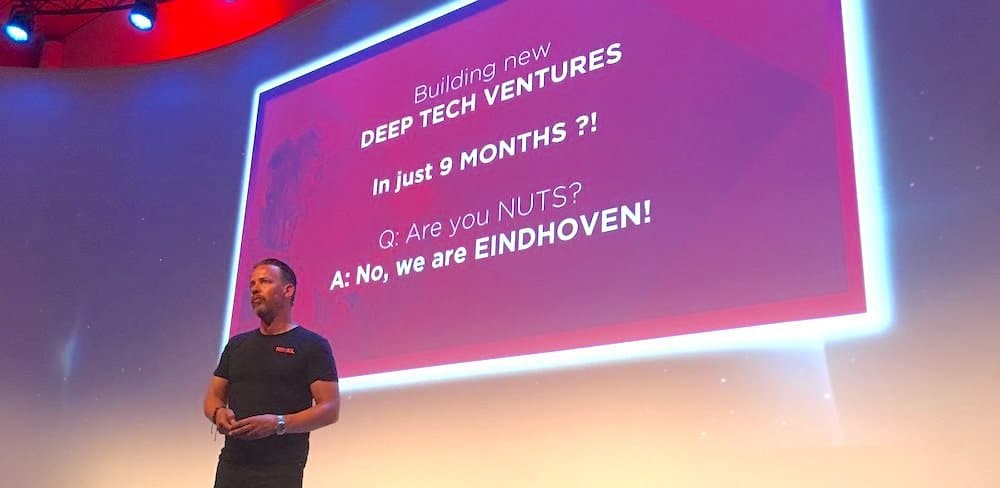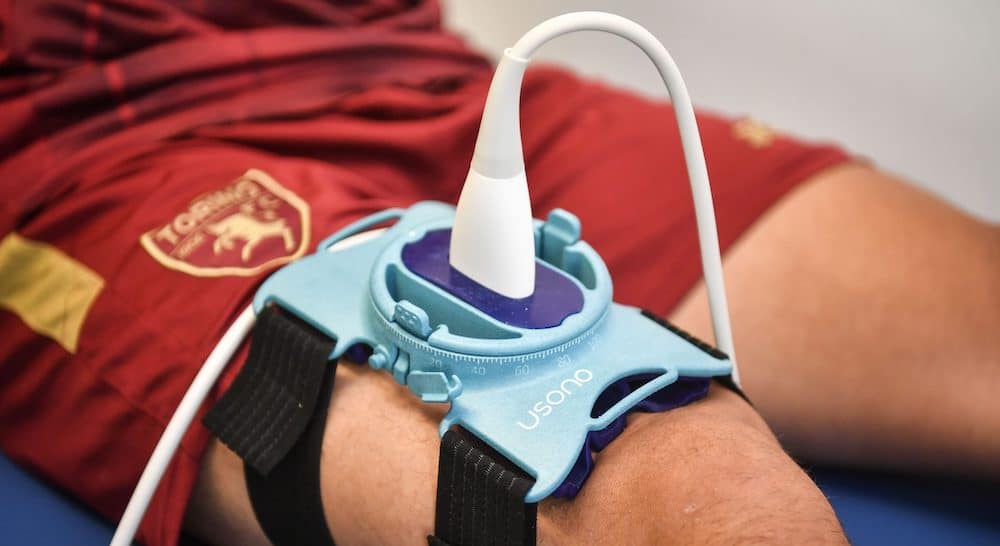HTXL Pivots: ‘The right idea in the right place at the right time’

It’s not often everything in a startup ecosystem changes in one year, but that’s exactly what happened at HighTechXL.
In July 2018, HighTechXL pivoted from a high tech accelerator to a deep tech venture building effort … and an historic alliance with CERN to take to market the latest tech from the world’s largest particle physics lab.
Then in November 2018, HighTechXL launched three startups built around the particle research center in Switzerland, and three CERN technologies – CO2 cooling, a long-distance structured laser beam and a compact high-frequency particle accelerator.
All three of those startups – Incooling, Aircision and Dynaxion – have been by startup standards home runs, raking in investments and getting global publicity.
And while it was all Guus Frericks’ decision to pivot, the HighTechXL CEO and co-founder says this past 12 months wouldn’t have been the crazy run of success it has if it weren’t for having the right idea in the right place at the right time.
All the ingredients for success were there waiting to be tapped.
The new HighTechXL “is powered by the local ecosystem,” Guus said. The previous five years accelerating high-tech startups helped develop “very close relationships in the region” with everyone in the ecosystem.
Working with more than 60 startups, “we learned a lot but above all, we developed a high-level of trust,” Guus said. Having the trust of the major players – entrepreneurs, corporate leaders and tech talent – meant it was easier to mobilize the collective technical might of the Brabant region for the new HighTechXL approach.
Eindhoven had several competitive advantages waiting to be connected … a network, access to competencies and access to lab facilities.
“The question was, ‘How can we best capitalize on those assets? Where can we really add value?’ ” Guus said.
Eindhoven is all about high-precision engineering, mechatronics, embedded software and complex system design.
“Then we said, ‘What would happen if we only worked with propositions where we as a region can make a difference? Do we start with high tech startups, or take it one step further and take ground-breaking technology as a starting point?”
Eindhoven’s biggest advantage is having the trust of the Eindhoven Startup Alliance, which includes global high-tech companies such as ASML. Another is the sheer scale of talent, with more patents filed each year per capita here than any place in the world.
“CERN said, ‘Well, if there’s a region in Europe where you can make a difference in certain areas, it’s Eindhoven. There was a high level of trust we could do something spectacular with those CERN technologies.”
The new model is far more time- and labor-intensive. The pivot involved moving from accelerating teams building high-tech products to taking CERN technology, then finding the right people for the teams and determining which application areas are relevant.
Then, HighTechXL extended the venture-building period nine months from the 90-day accelerator, converting some proven acceleration managers to founders and cofounders of the new ventures.
“That was a massive change in the organizational model,” Guus said.
“I’m super impressed by what can be done in nine months. But we could only do it because we could unlock the specific knowledge networks we have in place in the region.”
That high level of trust and buy-in from ASML and other members of the Eindhoven Startup Alliance “adds so much credibility to a venture.”
It hasn’t been all smooth sailing. Dynaxion struggled early with a team in flux as well as too many false starts and lack of clarity for the best and highest use for CERN’s small quadrupole linear particle accelerator/collider. The goal now is to create a better way to scan everything from the 100 billion packages projected to be shipped worldwide by 2020 to luggage at the airport.
“With Dynaxion, maybe we’ve been a bit too enthusiastic,” Guus said. “I remember CERN said, ‘We admire you for being so brave to pick up one of the most complicated things out of our labs.”
Trying to incorporate the linear accelerator into a scanning device demands a longer development cycle and significant initial capital. “But on the other hand, this venture can completely change the landscape of security screening. The evidence is there with the whole tender from the White House,” Guus said.
Dynaxion was chosen in April for the Opioid Detection Challenge sponsored by a number of United States federal agencies including Homeland Security, the U.S. Postal Inspection Service and U.S. Customs and Border Protection. Those agencies believe Dynaxion’s particle accelerator tech has the potential to scan packages for illegal substances including heroin and other opiates, and Dynaxion received $100,000 in funding.
Incooling has also taken the startup world by storm, raising more than 600,000 euros with new commitments every day from international partners.
Aircision is using CERN’s structured laser beam technology to conduct a Free Space Optics test on High Tech Campus later this year. The experiment will help test the capabilities of 5G, the next frontier in telecommunications. They’ve raised their first round of funding and received €40K in subsidies to put toward the FSO test. And they are in talks with several telecom giants who want to partner with the young startup.
The success of the three proves Eindhoven is all about deep tech, Guus said.
“But it’s the matter of putting the network and the local region in motion behind these propositions.
“And of course a bit of luck.”
About HighTechXL
HighTechXL is the Netherlands’ premier deep-tech venture builder, solving societal challenges by combining groundbreaking technologies and entrepreneurship. We bring together and activate technology, talent, funding and a strong ecosystem in our unique Venture Building Program.
News

